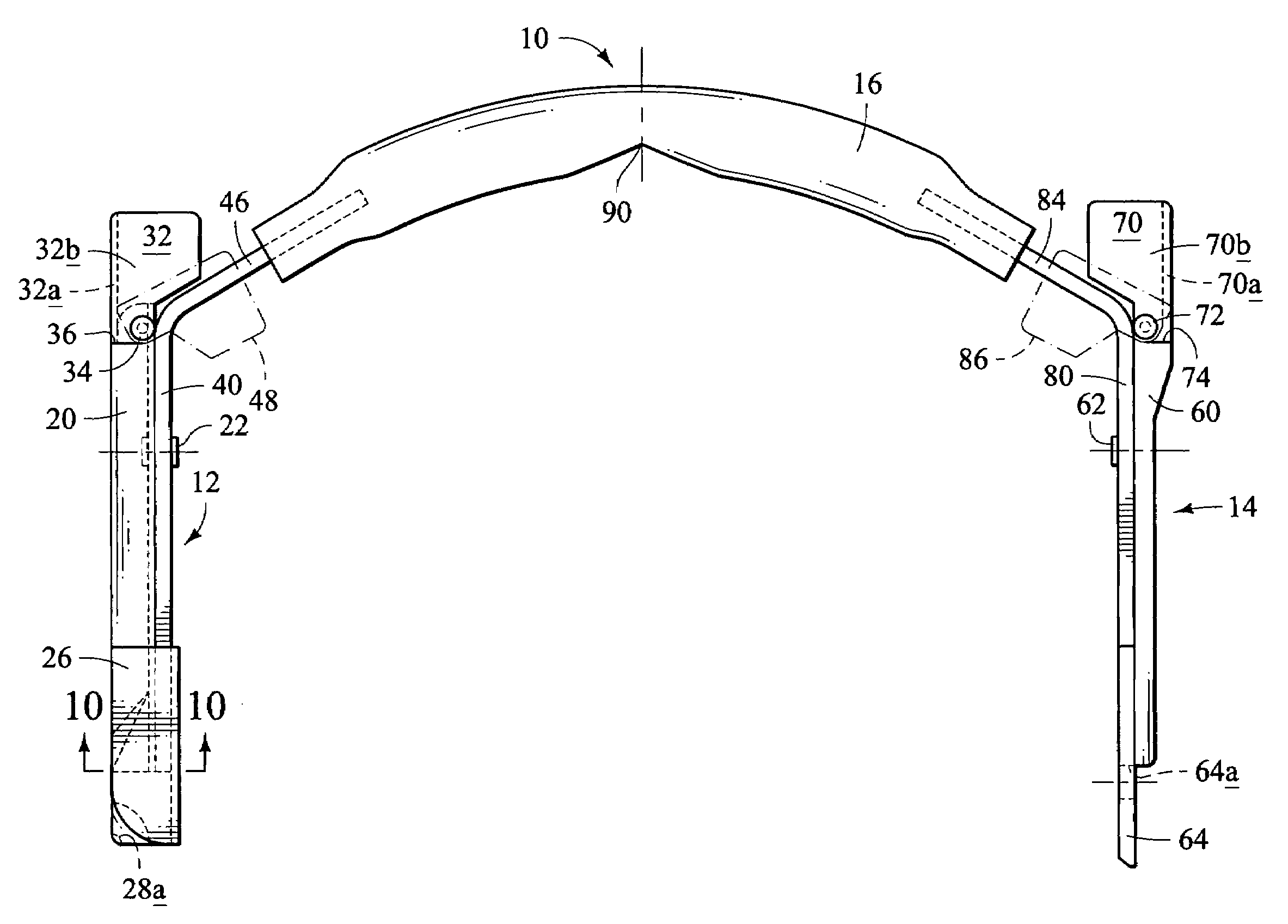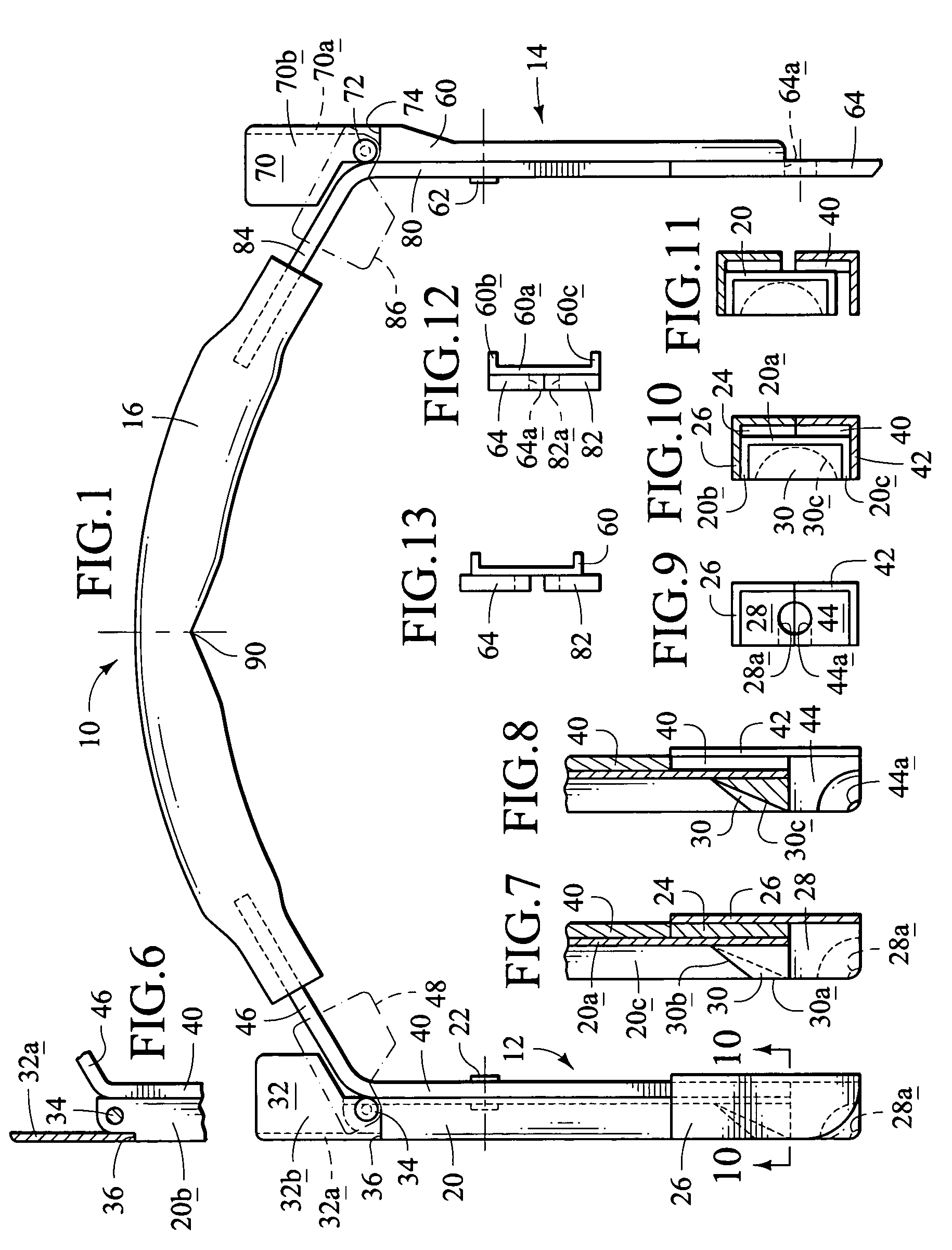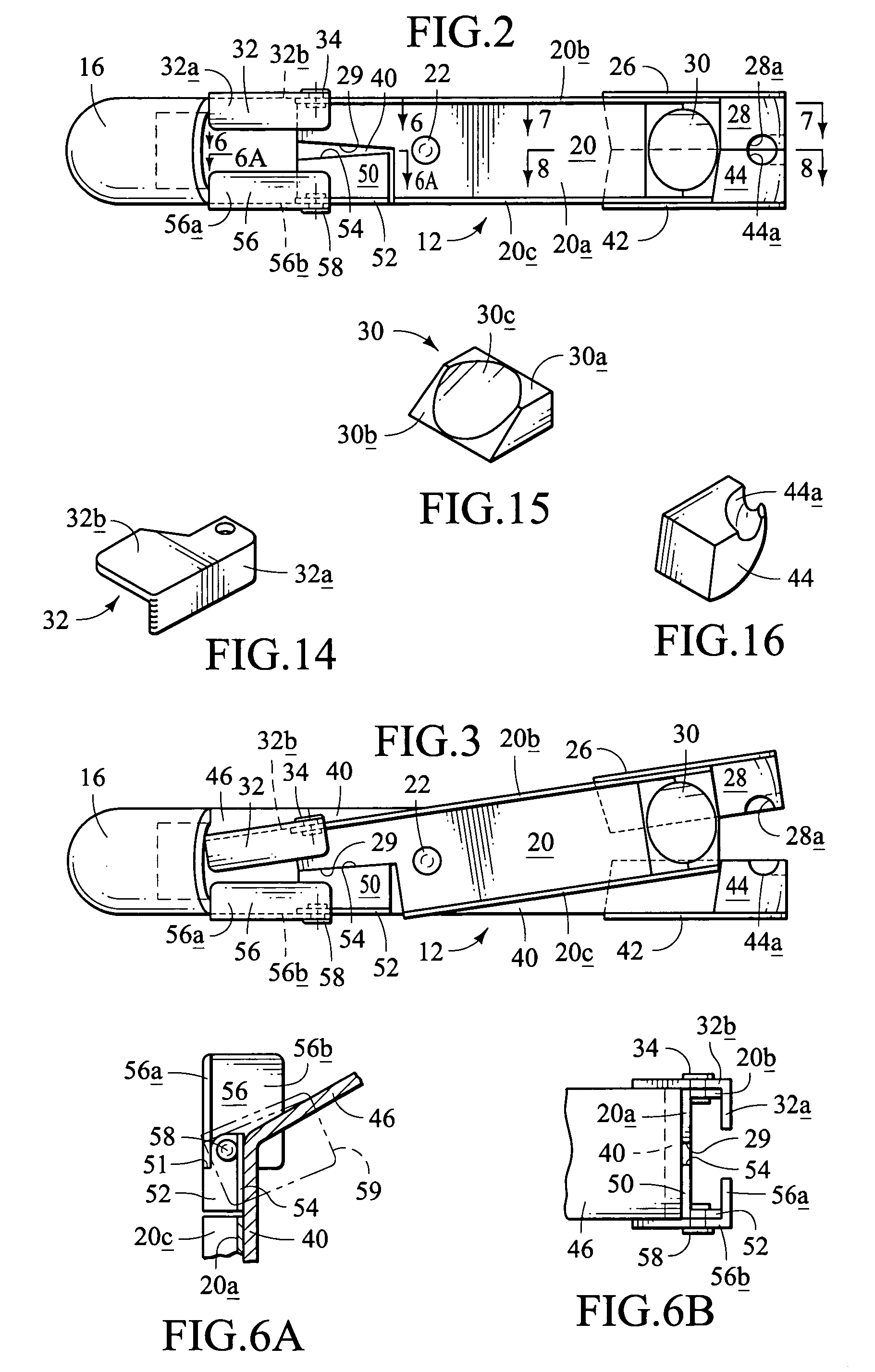System for installing chains on vehicle tires
- Summary
- Abstract
- Description
- Claims
- Application Information
AI Technical Summary
Benefits of technology
Problems solved by technology
Method used
Image
Examples
Embodiment Construction
Definitions
[0070]The following terms will be used throughout this application in accordance with these definitions, unless a different interpretation is required by the context.
[0071]The term “tire” refers to an inflated tire mounted on a rim which is a component of a wheel on a vehicle. The tire has a tread which joins 2 sidewalls—an “inner” sidewall toward the shaft driving the wheel and an opposite, “outer” sidewall. The terms “inner” and “outer” will be used in a similar manner to refer to an arm of the tool intended to be used adjacent a sidewall. The “width” of the tread is the distance between its edges, in the direction parallel to the axis of rotation of the wheel. The “maximum width” or “section width” of the tire is its maximum width in a direction parallel to the wheel's axis of rotation and is conventionally the nominal width of the tire. The “radius” of the tire is the distance from the axis of rotation to the ground. The “footprint” of the tire is the portion of its t...
PUM
| Property | Measurement | Unit |
|---|---|---|
| Force | aaaaa | aaaaa |
| Height | aaaaa | aaaaa |
| Distance | aaaaa | aaaaa |
Abstract
Description
Claims
Application Information
 Login to View More
Login to View More - R&D
- Intellectual Property
- Life Sciences
- Materials
- Tech Scout
- Unparalleled Data Quality
- Higher Quality Content
- 60% Fewer Hallucinations
Browse by: Latest US Patents, China's latest patents, Technical Efficacy Thesaurus, Application Domain, Technology Topic, Popular Technical Reports.
© 2025 PatSnap. All rights reserved.Legal|Privacy policy|Modern Slavery Act Transparency Statement|Sitemap|About US| Contact US: help@patsnap.com



